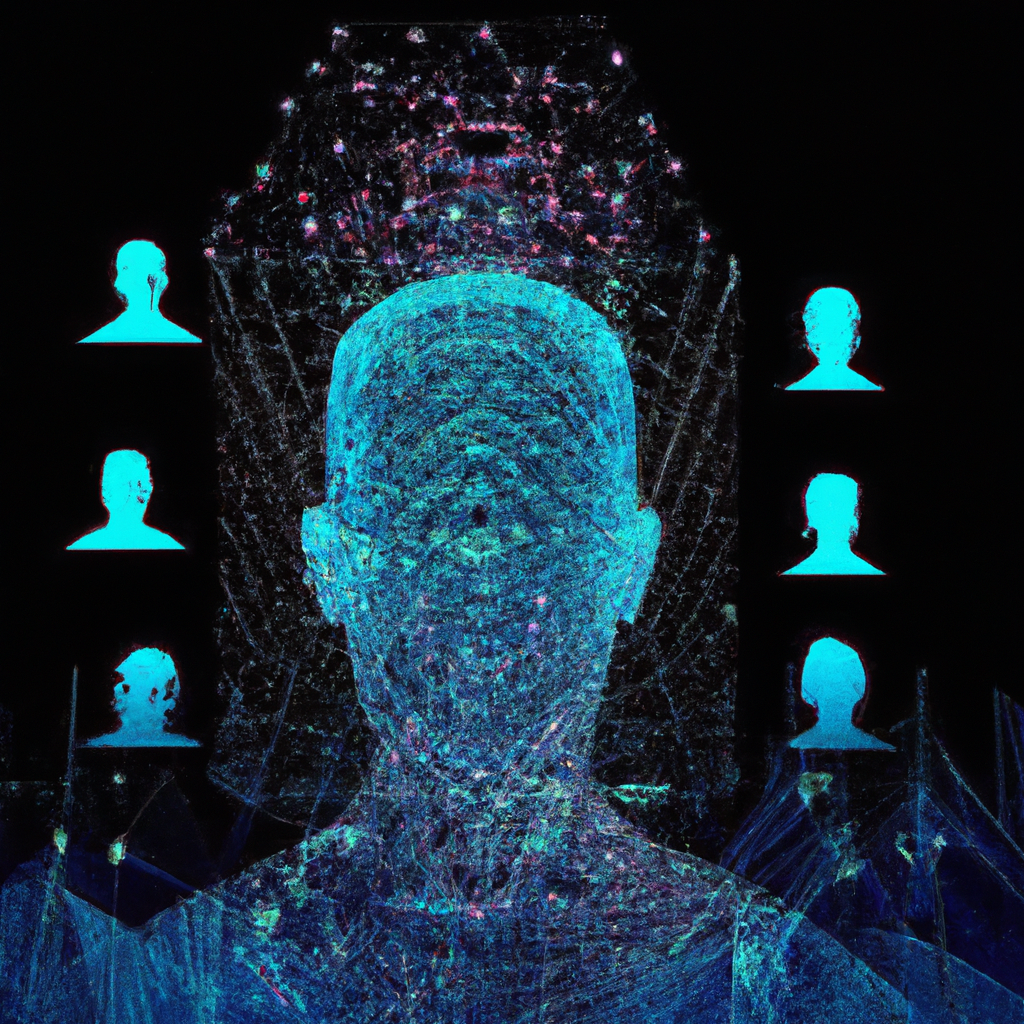Imagine a world where machines possess the power to think, learn, and make decisions like humans. Artificial intelligence (AI) has emerged as a revolutionary field that aims to bridge the gap between human and machine intelligence. However, this groundbreaking technology is not without its challenges. In this article, we will explore the complex obstacles that AI encounters as it strives to transform various industries, including ethics, privacy concerns, and the risk of job displacement. Join us as we delve into the fascinating world of AI and uncover the hurdles it faces on its path to revolutionizing our society.

Data Limitations
Insufficient and Biased Data
One of the key challenges in AI is the availability of insufficient and biased data. AI systems rely heavily on data for training and making decisions. However, data can often be limited, incomplete, or biased, leading to inaccurate and unfair outcomes. For instance, if an AI algorithm is trained on a dataset that primarily represents a specific demographic group, it may not perform well for other groups, leading to discriminatory outcomes. Additionally, there may be cases where the available data is not sufficient to make accurate predictions or decisions, resulting in suboptimal performance of AI systems.
Data Privacy and Security
Another significant concern in the field of AI is the issue of data privacy and security. AI algorithms often require access to large amounts of personal and sensitive data to function effectively. However, the collection, storage, and use of such data raise concerns about privacy and the potential for misuse or unauthorized access. As AI systems become more integrated into various aspects of our lives, ensuring the privacy and security of user data becomes increasingly crucial. It is essential to establish robust data protection measures and regulations to mitigate these risks and build trust in AI technology.
Data Quality and Reliability
The quality and reliability of data used in AI systems are fundamental for their accuracy and effectiveness. However, there are challenges in ensuring the quality of data. Data can be noisy, inconsistent, or contain errors, leading to inaccurate and unreliable outcomes. Moreover, in certain domains, acquiring labeled data for training AI models can be a time-consuming and expensive process. The lack of high-quality and reliable data can limit the performance and broader adoption of AI technologies. Addressing these challenges requires efforts to improve data collection, labeling, and validation processes, as well as developing techniques to handle noisy or incomplete data.
Lack of Human-like Understanding
Natural Language Processing Challenges
One of the prominent challenges in AI is developing natural language processing capabilities that mirror human-like understanding. Human language is complex, nuanced, and often ambiguous. Teaching AI systems to comprehend and generate language with the same depth of understanding as humans is a complex task. Challenges include deciphering sarcasm, understanding context-specific references, and handling language variations and regional dialects. NLP algorithms need to advance to overcome these challenges and achieve higher levels of accuracy and comprehension in order to enhance communication and interaction with AI systems.
Context and Ambiguity
Language is often ambiguous, and understanding meaning requires considering the context in which the words or phrases are used. AI systems struggle with interpreting context-dependent information, which can result in misinterpretation or incorrect responses. For example, a chatbot may fail to understand a user’s query if it does not accurately capture the underlying context. Resolving this challenge involves developing more sophisticated algorithms that can grasp context and disambiguate meanings effectively.
Emotional and Social Intelligence
AI systems typically lack emotional and social intelligence, which are critical for human communication and interaction. Understanding and responding to human emotions and social cues are complex tasks that require empathy, intuition, and cultural understanding. While some progress has been made in developing emotionally intelligent AI, there are still significant challenges to overcome. AI systems need to recognize and respond appropriately to human emotions, which can vary greatly across individuals and cultures. Building emotional and social intelligence into AI systems can revolutionize many areas, from virtual assistants to mental health support, but it requires further research and development.
Ethical Considerations
Job Displacement and Economic Impact
One of the key ethical considerations surrounding AI is the potential for job displacement and its wider economic impact. As AI technologies continue to advance, there is a concern that certain jobs and industries may become obsolete. Automation and AI-driven systems can replace human workers in various tasks, leading to unemployment and economic disruption. Balancing the potential benefits of AI with the need to protect workers and ensure economic stability is a critical ethical challenge that needs to be addressed. It requires a proactive approach, such as investing in reskilling and retraining programs, to mitigate the negative consequences of job displacement.
Algorithmic Bias and Discrimination
Algorithmic bias refers to the unfair or discriminatory outcomes that can arise from the use of AI algorithms. AI systems are designed and trained by humans, which means they can inadvertently inherit societal biases present in the data or the selection of features. This can lead to discriminatory outcomes or reinforce existing biases in decision-making processes, such as hiring or loan approvals. Addressing algorithmic bias requires a conscious effort to identify and mitigate biases in training data, as well as implementing transparency and accountability measures in AI development and deployment.
Autonomous Weapons and Military Use
The development of autonomous weapons powered by AI raises significant ethical concerns. Fully autonomous weapons systems have the potential to make life-or-death decisions without human intervention. Ensuring responsible use of AI in the military requires careful consideration of the consequences and implications of such technologies. Ethical guidelines and international regulations need to be established to prevent the misuse of AI in warfare and ensure that human judgment and accountability are maintained in critical decision-making processes.
Explainability and Transparency
Black Box Problem
One of the challenges in deploying AI systems is the lack of explainability, often referred to as the “black box” problem. AI algorithms can generate highly accurate predictions, but understanding how these predictions were made can be challenging. This lack of transparency raises concerns about bias, unfairness, and the potential for unintended consequences. For certain domains such as healthcare or finance, where making informed decisions is crucial, explainable AI is essential. Researching and developing methods to interpret and explain the decision-making processes of AI systems help build trust and facilitate their responsible use.
Lack of Interpretability
In many cases, AI models produce complex internal representations and decision-making processes that humans find difficult to interpret or understand. This lack of interpretability poses challenges in areas where it is important to explain the underlying rationale for AI-generated outputs. For example, in healthcare, medical practitioners need to understand how an AI system arrived at a diagnosis or treatment recommendation. Tackling interpretability challenges requires the development of techniques and methodologies that provide insights into how AI models reach their conclusions and recommendations.
Understanding Complex Decision-making
AI algorithms are increasingly being used in complex decision-making scenarios, such as autonomous vehicles or financial predictions. Understanding and ensuring the fairness and accountability of these decisions pose challenges. AI systems may consider numerous factors and complex interactions, making it difficult for humans to comprehend why a particular decision was made. Ensuring that AI systems make decisions that align with human values, as well as being able to explain those decisions, is crucial for building trust and acceptance of AI technology.

Safety and Security
Malicious Use of AI
The potential for the malicious use of AI is a growing concern. AI technologies can be leveraged for nefarious purposes, such as creating realistic deepfake videos or launching sophisticated cyber-attacks. As AI capabilities advance, so do the risks associated with its misuse. There is a need to develop robust security measures and ethical guidelines to prevent the malicious use of AI and safeguard individuals and organizations from potential harm.
Adversarial Attacks
Adversarial attacks involve deliberately manipulating input data to deceive or mislead AI systems. These attacks can undermine the security and reliability of AI systems. For example, an autonomous vehicle’s object recognition system could be tricked into misclassifying a stop sign, leading to potentially dangerous consequences. Developing robust defenses against adversarial attacks involves understanding the vulnerabilities of AI systems and designing algorithms that are resistant to such attacks.
Autonomous Decision-making
The concept of autonomous decision-making by AI systems raises safety concerns. Ensuring that AI systems make decisions that align with human values and prioritize safety is crucial. Autonomous vehicles, for instance, need to make split-second decisions to prevent accidents, considering factors like passenger safety and pedestrian welfare. Striking the right balance between autonomous decision-making and human oversight is essential to ensure the safety and well-being of individuals interacting with AI-powered systems.
Technology Limitations
Hardware Constraints
AI algorithms often require significant computational resources and processing power to train and operate effectively. However, hardware limitations can hinder the performance and scalability of AI systems. Training complex deep learning models, for example, can be computationally intensive, requiring specialized hardware setups. Addressing hardware constraints requires advancements in hardware technology, such as the development of specialized AI chips, to support the growing computational demands of AI algorithms.
Software Limitations
Similarly, software limitations can impact the capabilities and performance of AI systems. Developing robust and efficient algorithms that can handle large-scale data, complex decision-making, and real-time processing is a continuous challenge. Research and innovation are necessary to overcome software limitations and enable AI systems to perform complex tasks accurately and efficiently.
Scalability and Processing Power
As AI technologies are increasingly adopted in various domains and industries, scalability becomes an important consideration. Scaling AI systems can be challenging due to the need for large amounts of compute resources and efficient data processing pipelines. Ensuring that AI systems can handle the growing volume and complexity of data, as well as adapt to changing demands, requires advancements in scalability and processing power, both at the hardware and software levels.

Human-Machine Collaboration
Trust and Dependence
Building trust between humans and AI systems is a critical challenge. Humans need to feel confident that AI systems will perform as expected and make decisions that align with their values. Establishing transparency, explainability, and accountability in AI systems helps foster trust. Additionally, finding the right balance between human decision-making and AI assistance is crucial to avoid over-reliance or blind trust in AI, ensuring that human judgment and values remain central.
User Experience Design
The user experience of interacting with AI systems plays a significant role in their acceptance and effectiveness. Designing intuitive and user-friendly interfaces that facilitate seamless human-machine collaboration is a challenge. AI systems need to understand user preferences, adapt to individual needs, and provide clear communication to enhance the experience. Investing in user experience design research and development is essential for creating AI systems that are easy to use, efficient, and supportive of human goals.
Human Oversight and Control
Maintaining human oversight and control over AI systems is vital to ensure ethical and responsible use. Humans should retain the ability to intervene, override, or review the decisions made by AI systems, particularly in critical domains like healthcare or finance. Striking the right balance between autonomous decision-making by AI systems and human control is essential to mitigate risks and ensure that AI technologies are used beneficially.
Regulatory and Legal Issues
Privacy Protection
AI systems often require access to personal and sensitive data, raising concerns about privacy protection. Data privacy regulations, such as the General Data Protection Regulation (GDPR), aim to safeguard individuals’ privacy rights. However, ensuring compliance with these regulations and developing mechanisms to address privacy risks associated with AI technologies remain ongoing challenges. Regulations need to keep pace with AI advancements and strike a balance between facilitating innovation and protecting individuals’ privacy.
Intellectual Property Rights
The development and deployment of AI systems often involve intellectual property (IP) considerations. Determining ownership and protecting AI-related innovations can be complex due to the involvement of multiple stakeholders and the potential for algorithmic advancements to build upon existing IP. Establishing clear guidelines and legal frameworks for AI-related IP rights is essential to foster innovation and prevent disputes.
Liability and Accountability
Determining liability and accountability in cases where AI systems cause harm or make incorrect decisions presents legal challenges. Traditional legal frameworks may not adequately address the unique aspects of AI technologies. Establishing clear guidelines and legal frameworks that define responsibilities and accountability when AI systems interact with humans is necessary to ensure fairness, justice, and a balance of legal protection for both individuals and organizations.

Adoption and Implementation Challenges
Costs and Return on Investment
The adoption and implementation of AI technologies can involve significant costs, both in terms of infrastructure and personnel. Organizations need to allocate resources for data collection, system development, and ongoing maintenance. Calculating the return on investment (ROI) of implementing AI systems can be challenging, particularly in cases where the benefits may be intangible or hard to quantify. The cost-benefit analysis of AI adoption needs to account for various factors, including potential efficiency gains, enhanced decision-making, and long-term sustainability.
Resistance to Change
Resistance to change can be a significant obstacle in the adoption of AI technologies. New technologies can disrupt existing processes, workflows, and job roles, leading to resistance and reluctance to embrace AI-driven solutions. Addressing resistance requires comprehensive change management strategies, effective communication, and demonstrating the benefits and value of AI technologies to both individuals and organizations. Involving stakeholders early in the process and providing training and support can help mitigate resistance and facilitate smoother adoption.
Skills and Training
The successful deployment of AI technologies requires a skilled workforce capable of developing and maintaining AI systems. However, there is a shortage of individuals with the necessary expertise in areas such as machine learning, data science, and AI ethics. Bridging the skills gap requires investments in education and training programs, as well as promoting interdisciplinary collaboration between academia, industry, and government. Providing accessible and inclusive training opportunities can enable a broader range of individuals to contribute to the development and deployment of AI.
Societal Impact
Inequality and Accessibility
The widespread adoption of AI technologies raises concerns about increasing inequality and accessibility gaps. If AI systems predominantly benefit certain individuals or groups, it can exacerbate existing societal inequalities. Ensuring fair and equitable access to AI technologies, as well as promoting diversity and inclusivity in AI development and deployment, is essential to prevent widening disparities. Additionally, efforts should be made to address the digital divide and ensure that disadvantaged communities have equal opportunities to access and benefit from AI-driven solutions.
Disruption of Industries
AI technologies have the potential to disrupt various industries, leading to significant changes in the workforce and business models. While AI can enhance productivity and efficiency, it can also render certain jobs obsolete or change the nature of work. Reskilling and retraining programs are crucial to minimize the negative impact of industry disruption and ensure a smooth transition for affected workers. Proactive efforts by organizations and policymakers to anticipate and manage the consequences of AI-driven disruption are vital for promoting long-term economic stability.
Unemployment and Job Market
The automation capabilities of AI systems raise concerns about unemployment and the future of the job market. There is an ongoing debate about the potential for AI-driven automation to replace human workers across various sectors. While automation can lead to the elimination of certain job roles, it can also create new opportunities and demand for skills. Preparing the workforce for the changing job market requires strategic planning, investment in education and training, and social safety nets to support affected individuals. By focusing on upskilling and reskilling, societies can harness the transformative potential of AI while addressing employment challenges.
In conclusion, AI faces numerous challenges across various dimensions. From data limitations, lack of human-like understanding, and ethical considerations to technology limitations, safety and security concerns, and human-machine collaboration, each area presents its own set of complexities. Addressing these challenges will require interdisciplinary efforts, involving researchers, policymakers, industry experts, and society as a whole. By proactively addressing these challenges, we can harness the potential of AI while ensuring its responsible and ethical use for the benefit of individuals and society at large.










